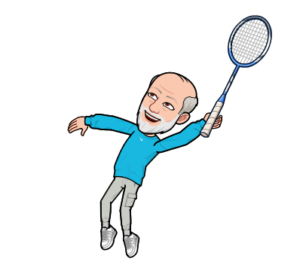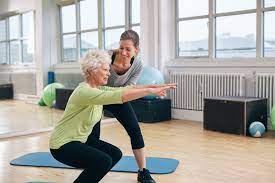 If you have older family members or loved ones, you may worry about their health as they age. Aging increases the risk of chronic diseases such as heart disease, type 2 diabetes, arthritis, cancer, and dementia. The good news is that adopting and maintaining a few key behaviors can help older adults live longer, healthier lives. As a family member, it’s important to encourage healthy lifestyle behaviors in your loved ones — it’s never too late to start!
If you have older family members or loved ones, you may worry about their health as they age. Aging increases the risk of chronic diseases such as heart disease, type 2 diabetes, arthritis, cancer, and dementia. The good news is that adopting and maintaining a few key behaviors can help older adults live longer, healthier lives. As a family member, it’s important to encourage healthy lifestyle behaviors in your loved ones — it’s never too late to start!
Healthy behavior changes can help older adults live more independently later in life. That’s important both for their quality of life and for yours. If a family member loses independence — whether it’s due to disability or chronic disease — you may find yourself in a caregiving role earlier than expected, which can affect family dynamics as well as finances.
So what can you do to help the older adults in your life manage their health, live as independently as possible, and maintain quality of life as they age? Read on to learn about four ways to help support and promote healthy habits in your older loved ones’ lives.
As people age, they often find themselves spending more time alone. Poor health, the death of a partner, caring for a loved one, and other situations that are more likely as people age can all lead to being socially isolated or feeling lonely.
Although they sound similar, social isolation and loneliness are different. Loneliness is the distressing feeling of being alone or separated, while social isolation is the lack of social contacts and having few people to interact with regularly. Increased social isolation and loneliness are associated with higher risks for health problems, such as depression; heart disease; and cognitive decline, which is a decrease in the ability to think, learn, and remember.
There are lots of reasons to make physical activity a part of daily life. Exercise can help reduce levels of stress and anxiety, improve balance and lower risk of falls, enhance sleep, and decrease feelings of depression. Most importantly, people who exercise regularly not only live longer, but also may live better — meaning they enjoy more years of life with less pain or disability. On the other hand, lack of physical activity can lead to increased visits to the doctor, more hospitalizations, and increased risk of certain chronic conditions.
Encouraging the older adults in your life to exercise may not be easy — it can be difficult to get someone to start a new activity — but the rewards are worth the effort. Following are some suggestions to help encourage exercise or other daily movement:
Healthy eating is an important part of healthy aging. As with exercise, eating well is not just about weight. Having a healthy diet can help support muscles and strengthen bones, which can help with balance and independence. A nutritious diet involving a variety of fresh fruits and vegetables, whole grains, healthy fats, and lean proteins also can help boost immunity and lower the risk of certain health problems such as heart disease, high blood pressure, obesity, type 2 diabetes, stroke, and some cancers.
It’s important for your older loved ones to have regular health exams and medical screenings. Visit MedlinePlus to learn about health screenings for women and men. Checking in with doctors annually, and possibly more often, depending on overall health, may help reduce risk factors for disease such as high blood pressure and cholesterol levels. Regular check-ups can also help catch concerns early and improve the chances for effective treatment.


